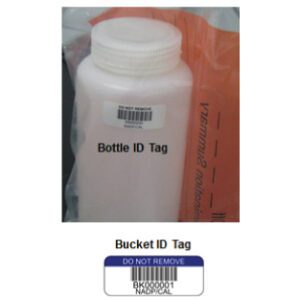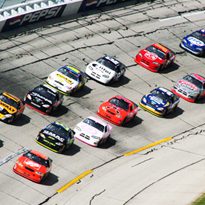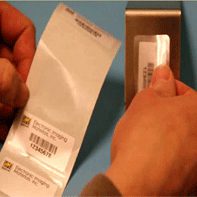PDF417 Barcodes are one of the four most popular two-dimensional barcodes to be developed; it was created in 1992 by Symbol Technologies, a leading manufacturer of barcode scanners at the time. (The other three common 2D codes are QR Code, DataMatrix and MaxiCode; there were several others developed between 1988 and 1995 but they just never took off to become widely used.)
PDF417 gets its name from the acronym for “portable data file.” The “417” was added because there are 4 bars and 4 spaces arranged within every 17 module codeword, aka character. These characters or clusters have a specific formula for the size of each bar in the cluster.
Unlike the square DataMatrix or the QR Codes, PDF417 is a high-density, stacked linear symbol, rectangular in shape. It is stacked to hold large amounts of data – usually with 100 to 200 characters – and the aspect ratio can be adjusted to deal with space limitations. It has various levels of redundancy built into it so that up to 50% of the code can be damaged and yet the data can still be recovered. In general, however, PDF417 can take about four times the amount of space that DataMatrix or the QR Code requires.
PDF417 has gained popularity in the transportation industry and is regularly used by FedEx. It was also chosen to print postage for the US Postal Service and is commonly used for aircraft boarding passes. Moreover, you will regularly see it on driver’s licenses and other ID cards. Other applications include manufacturing parts tracking, lottery tickets, patient wristbands, and tradeshow lead retrieval systems.
PDF417 consists of 3 to 90 rows of data that can encode up to 1850 ASCII or 2725 numeric characters. This code was designed to be scanned with slightly modified rastering laser scanners or liner CCD scanners such as the DS6708 2D Imager. NOTE: At the high end of data encoding (above 800 characters), you may find it best to switch to the Macro PDF version, depending on the type of data, the error correction level chosen and the scanner being used.
 For a scanner to easily identify this code, there is vertical start and stop bar groups along the ends of the stacked codes. Next to the start pattern is a left row codeword that contains the row number and the error correction level. A right row codeword next to the stop pattern provides more information about the row. All rows are the same size and each row has the same number of codewords.
For a scanner to easily identify this code, there is vertical start and stop bar groups along the ends of the stacked codes. Next to the start pattern is a left row codeword that contains the row number and the error correction level. A right row codeword next to the stop pattern provides more information about the row. All rows are the same size and each row has the same number of codewords.
For humans, it is easy to recognize PDF417 barcodes because you see these bold start and stop bars that enclose highly compacted digital patterns. If you look closer you will see a vertical arrangement of visual row separations between the code words. The next time you have to pull out your driver’s license, be sure to look for the barcode. It’s a great chance to impress someone with you, even if you don’t know what it actually says.PDF417 Barcode created in BarTender® Label Software[/twocol_one_last]





